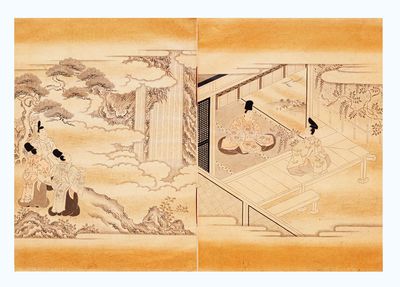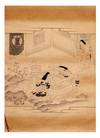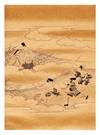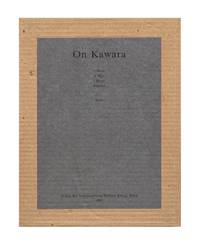Finely illustrated manuscript of Tale of Ise on smooth & thick torinoko paper with 30 full-page & one double-page paintings, employing sumi ink, various washes, sprinkled gold, & gold paint. Leaves of text underpainted in gold with delicate floral devices. Written throughout in a fine calligraphic cursive hand. 34; 35; 33 leaves. Three vols. Small 4to (234 x 171 mm.), retchoso binding, orig. gold & blue-green silk brocade over semi-stiff wrappers, gold endpapers, gold-patterned manuscript labels on upper cover. [Japan]: early to mid-Edo.
A very beautifully illustrated manuscript of Tale of Ise, one of the earliest and most (truncated)
A very beautifully illustrated manuscript of Tale of Ise, one of the earliest and most (truncated)








